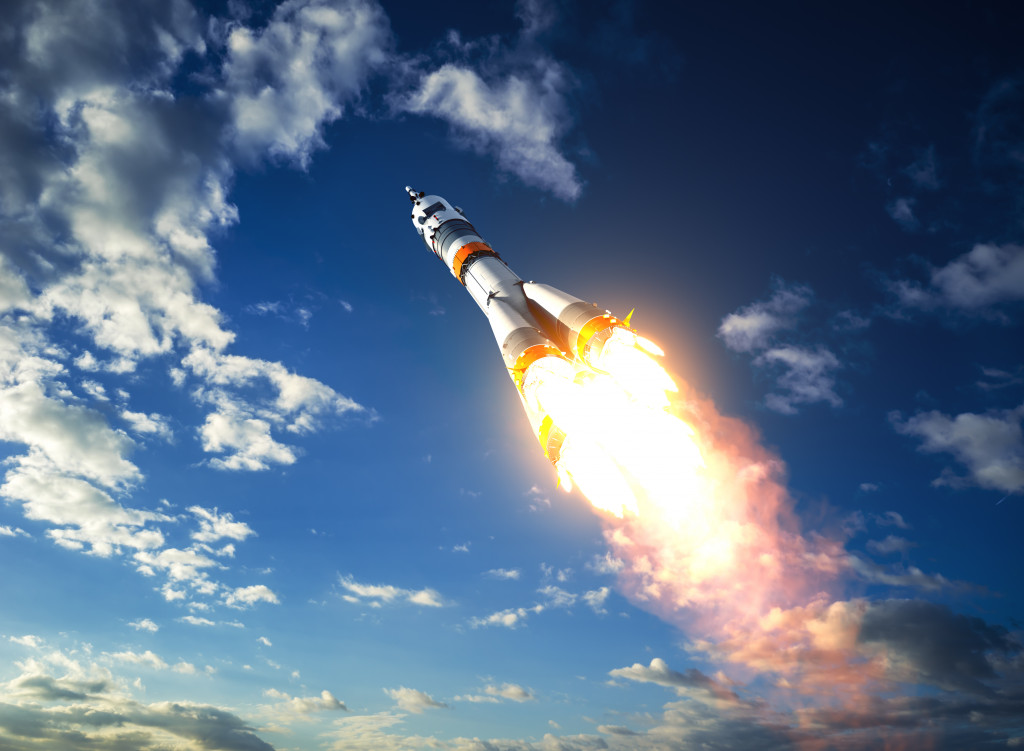As space exploration continues to evolve, the technologies protecting space rockets have become more essential. From launch to landing, these technologies play a vital role in keeping our astronauts safe and our missions successful. Here are some of the critical technologies protecting space rockets today.
Radiation Protection
Space is a harsh environment. Radiation can cause serious health risks to astronauts, so radiation protection is essential for space missions. Several types of radiation can be dangerous, including cosmic rays, solar flares, and radiation belts.
Cosmic Rays
Some rays are invisible to the human eye and exist naturally in space. These rays are energetic particles from stars and galaxies, supernovae, black holes, and neutron stars. These rays can penetrate and damage living organisms’ cells, leading to long-term health issues.
Solar Flares
When the sun emits radiation, it is called a solar flare. Solar flares can be dangerous for astronauts since they can damage equipment on spacecraft and cause health risks to the people onboard. Thankfully, scientists explicitly developed several types of shielding to protect against solar flares.
Radiation Belts
There are also radiation belts surrounding Earth, consisting of energetic electrons trapped in Earth’s magnetic field. These belts can expose astronauts to harmful radiation if they’re not appropriately protected during missions outside Earth’s atmosphere.
Thankfully, there are various ways space rockets are protected from radiation. Here are some of those ways:
Shielding Materials
Space rockets are often covered with a thick layer of shielding materials, including aluminum and steel. This material is a physical barrier against radiation and helps minimize damaging rays’ effects. Additionally, some of these materials protect critical computing systems. For example, various advanced RAMs for aerospace applications are now equipped with the latest self-protecting features to mitigate radiation effects. These are crucial for space missions and help ensure rockets get the necessary computational power for space exploration.
Radioactive Materials
Some space rockets are designed with radioactive materials onboard, emitting radiation that can shield against other harmful rays. Combined with traditional shielding materials, these radioactive materials provide even greater protection for space missions.
Space Suits
Even when astronauts are inside the spacecraft, they need to be protected from radiation. That’s why many space suits are designed with unique layers of protection on the outside and inside to prevent harmful rays from reaching the body.

Thermal Protection
The sun is incredibly hot, reaching upwards of 17 million degrees Celsius. This extreme heat can cause severe damage to spacecraft and astronauts. To protect against this, space rockets are equipped with thermal insulation. This insulation helps to keep the spacecraft and its occupants cool, even in the face of the sun’s intense heat.
The insulation inside space rockets comprises various materials to help maintain a comfortable temperature. These include heat-resistant fabrics, foams, and next-generation nanomaterials that can disperse heat rapidly.
Additionally, space rockets often have cooling systems that can expel excess heat when necessary. It ensures that the insulation materials inside the rocket never get too hot and keep spacecraft temperature within safe limits.
Sometimes, a space rocket may need to enter a frozen state. It can be helpful for preserving certain materials, such as food or scientific samples.
To accomplish this, some rockets are equipped with unique cooling systems that rapidly lower the temperature inside the spacecraft. These cooling systems include refrigerants and fluids that can drop temperatures dramatically in minutes. This is useful for maintaining the quality of certain materials over long periods.
Landing Systems
Landing a space rocket safely is no easy feat. To help with this, space rockets are equipped with various landing systems. These systems help to slow the rocket down as it approaches the ground, cushioning the landing and preventing damage to the rocket and its contents. Landing systems also help to keep the rocket stable during landing, preventing it from tipping over or sliding off the landing pad.
Additionally, space rockets can often handle immense pressure thanks to their special shock absorbers. These shock absorbers help to minimize the effects of strong winds and other environmental hazards, ensuring that space rockets land safely and with minimal damage.
Space exploration is increasingly important, and the technologies protecting our space rockets are essential to its success. From launch to landing, these technologies play a vital role in keeping our astronauts safe and our missions successful. So next time you see a takeoff or landing on TV, remember all the hard work that went into making it possible—and all of the essential technologies that made it safe.

